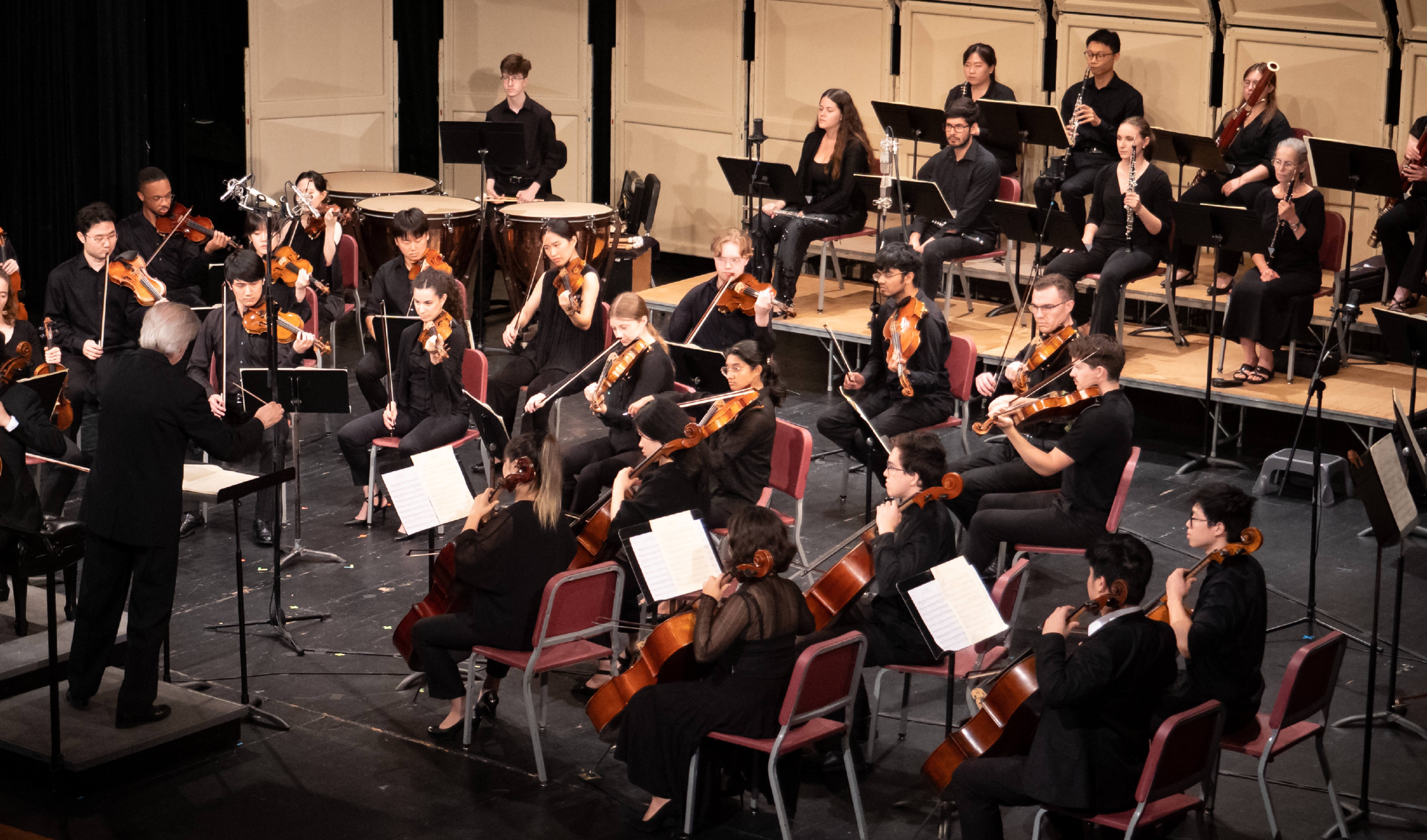- This event has passed.
WOLFGANG AMADEUS MOZART (1756–1791)
Sinfonia Concertante in E-flat Major for Violin and Viola, K. 364
-
- Allegro maestoso
- Andante
- Presto
Robin Scott, violin • Dimitri Murrath, viola • Angel Gil-Ordóñez, conductor • Festival Orchestra
Robin Scott’s Festival residency is generously sponsored by Elliot Rosen and Sharon Cohen.
— Intermission —
PYOTR ILYICH TCHAIKOVSKY (1840–1893)
String Sextet in D Minor, Op. 70, “Souvenir de Florence”
-
- Allegro con spirito
- Adagio cantabile e con moto
- Allegretto moderato
- Allegro vivace
Ayano Ninomiya, Itamar Zorman, violin • Dimitri Murrath, Phillip Ying, viola • David Ying, Ahrim Kim, cello
PROGRAM NOTES
WOLFGANG AMADEUS MOZART
Sinfonia Concertante in E-flat Major, K. 364 (1779)
A sinfonia concertante, as its name suggests, is a Classical genre which falls somewhere between symphony and concerto — that is, an orchestral work with two or more prominent soloists in the forefront. The typical sinfonia concertante is lighthearted, nearly always in a major key, and has a particular focus on the soloists’ virtuosic display. The form began to gain great popularity in the 1770s, particularly in the Paris and Mannheim musical circles. In fact, in that decade, more symphonies concertantes appear to have been composed than conventional symphonies or solo concertos.
It was shortly after returning to Salzburg from a European tour — with notable long stays in both Mannheim and Paris — that Mozart composed this Sinfonia Concertante for Violin, Viola, and Orchestra, K. 364. Having been exposed to the form during his travels, Mozart tried his hand at it. After discarding two initial attempts, Mozart began again from scratch, resulting in the present work. In it, Mozart demonstrates his awareness of the fashionable compositional techniques associated with the genre, such as the orchestra’s dramatic crescendo above an E-flat pedal in the bass (a technique which musicologists have whimsically named a “Mannheim steamroller”), setting the stage for the soloists’ entry in the first movement. Yet, he breaks away from other trends, deciding to cast the second movement in a minor key — a rarity among Mozart’s major-key concerti, and even rarer for a sinfonia concertante. This Sinfonia Concertante is particularly important within Mozart’s output as it contains the only cadenzas written and published by Mozart for string soloists. While it was standard practice for soloists to improvise or compose their own cadenzas, Mozart did frequently include a composed cadenza in his concerti, which he would typically expand further during performance. Given the absence of surviving cadenzas for Mozart’s string concerti, however, the candenzas in the first and second movements of the Sinfonia Concertante provide insight as to how Mozart might have imagined cadenzas for his five Violin Concerti, completed four years earlier.
PYOTR ILYICH TCHAIKOVSKY
String Sextet in D Minor, Op. 70, “Souvenir de Florence” (1890)
Tchaikovsky had the notion to compose a string sextet as early as 1887. The previous year, he had been presented honorary membership in the Saint Petersburg Chamber Music Society, and he promised his friends in the organization a new chamber composition in gratitude. But in 1890, when Tchaikovsky began composing the music in earnest, it did not come easily to him. He struggled with the dense texture of the string sextet. He wrote to his friend Aleksandr Ziloti of how it was “terribly difficult working in this new form; it seems that rather than writing for six voices, I am, in essence, composing for the orchestra, and only then arranging it for six string instruments.” Indeed, Tchaikovsky had just been laboring over The Queen of Spades and The Nutcracker, and may have struggled converting the momentum from these large-scale projects to the more intimate chamber music setting.
Tchaikovsky’s breakthrough on the Sextet came following a stint in Florence, a favorite vacation spot of his. When there, he stayed at a villa owned by his most faithful benefactress, Nadezhda von Meck — an interesting and by all accounts extraordinary woman, whom Tchaikovsky long considered his “best friend,” despite their mutual agreement to never meet face to face. If Tchaikovsky found inspiration and respite in Florence, however, he set down the composition upon his return to Russia, infusing the later movements with distinctly Russian themes. In the end, the composition’s wistfully programmatic title refers more to Tchaikovsky’s nostalgia for the city than to any musical evocation of Italy. After initial anxieties following the Sextet’s unsatisfying premiere, Tchaikovsky undertook significant revisions, and rewrote large sections of the third and fourth movements. When the Sextet was reintroduced, Tchaikovsky was giddy with pride: “What a sextet!” he wrote to his brother, Modest, “and what a fugue at the end — it’s a pleasure! It is awful how pleased I am with myself.”
Program Notes by Peter Asimov


